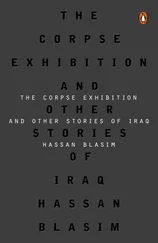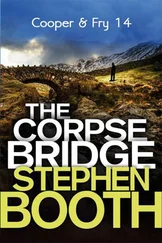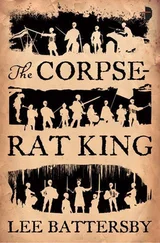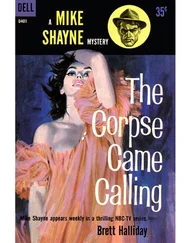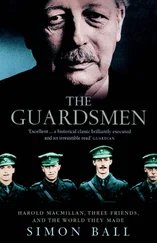I had always enjoyed drawing and had started to do a great deal of it during that first summer I worked with father. The hours of waiting for death were long and boring. After I’d exhausted all my questions about death and filled numerous notebooks with notes about the rituals of washing, I started to draw father’s face from various angles, capturing him in the washhouse and at home watching TV. He wasn’t bothered at all and teased me sometimes: “Isn’t that enough? I’m no Saddam Hussein!”
One day, I drew Hammoudy as well. I liked his short spiky hair, wide eyes, and beautiful eyelashes. He liked his portrait so much that he asked to keep it. I offered to draw his portrait on a bigger piece of paper the next day and he was ecstatic. Father and Hammoudy were the only live models I could draw. I filled the notebooks with sketches of the washing bench and the shadows that gathered around it at various hours of the day. I drew the water faucet and tried to show the droplet of water at the moment it was about to fall from the faucet, but I couldn’t get it right.
Once, father got very angry when he found out that I was sketching the face of a dead man he’d washed just that morning. He scolded me: “Shame on you! The dead have their sanctity. Draw your father or Hammoudy as much as you want, but leave the dead in peace!”
Flustered, I lied, saying that I had been sketching the face of a relative who had accompanied the dead man and not the dead man himself.
He snatched the notebook from me and pointed to the sketch and said: “Don’t lie! Here he is lying on the washing bench!” He ripped the page out and tore it to pieces.
I apologized and never did it again. I felt ashamed and humiliated and went out to the little garden and sat next to the pomegranate tree, tending to my wounds. I turned to a new page and started to sketch the tree and the pomegranates it bore.
Mr. Ismael told us that life is the eternal subject of art and that the world and everything in it are constantly calling out: “Draw me!” He never said that death and the dead were outside the bounds of art. I regret not having asked father what harm there was in drawing the dead. Would it change anything or disturb their eternal sleep?
In addition to his zeal and his seriousness in dealing with art, what distinguished Mr. Ismael was how he treated us as his friends. He never ridiculed us, never dismissed or devalued our opinions when we disagreed with him.
He walked between the rows of desks distributing the drawing pads and pencils while we looked on in disbelief. He asked those who liked drawing to raise their hands and I raised mine high. I looked around. Many others had raised their hands too. He smiled and said: “Marvelous! Picasso, one of the greatest artists of the twentieth century, said: ‘Every child is an artist. The challenge is for the artist to stay a child when he grows up!’”
One of the students in the back said: “But we are not children, sir.”
There was laughter and Mr. Ismael laughed too and said: “You are young men and not children. The idea is that art allows the child imprisoned inside the adult to come out to play and celebrate the world and its beauty.”
He said that art was intimately linked with immortality: a challenge to death and time, a celebration of life. He said that our ancestors in Mesopotamia were the first to pose all these questions in their myths and in the epic of Gilgamesh, and that Iraq was the first and biggest art workshop in the world. In addition to inventing writing and building the first cities and temples, the first works of art and statues had appeared in ancient Iraq during the Sumerian era and now fill museums all over the world. Many still remained buried underground.
He said that we all were inheritors of this great treasure of civilization that enriches our present and future and makes modern Iraqi art so fertile. He asked whether we knew of the Liberty Monument in Liberation Square and the name of the artist who designed it, but we didn’t.
“Memorize the name of this man: Jawad Salim,” he said.
Mr. Ismael took out an apple. He put his bag and the apple on the table and asked us to draw them in fifteen minutes. Silence reigned except for the lead in our pencils scratching against the surface of the paper and the squeaking of a nearby desk whose occupant kept erasing what he’d just drawn. I started to sketch. I was seated in the third row close to the table. Those who were in the back had to stand up every now and then to look.
Mr. Ismael walked around checking each drawing and making comments. When he got to my desk, he stood and looked for half a minute without saying anything. I’d finished drawing the table, bag, and apple and started to add the shades in the corners and some other tiny details, especially how the sun’s rays entered the classroom from the window next to the table and how the bag blocked some of the light, leaving the apple in the shade.
I expected him to criticize me, but he said: “Well done, Jawad. Marvelous! Marvelous!” I was very happy with his approval and praise.
He continued to walk around and announced that ten minutes had passed. Five minutes later, he asked us to stop and put our pencils down. Then he told us to get up and have a look at what the others had drawn without making noise. Of course there was some chatter and some students who pretended to be critics, pointing with their fingers and offering silly comments. I saw one drawing that I thought could compete with mine, but the others were quite ordinary or incomplete.
After ten minutes the teacher asked us to go back to our seats. He asked what we had noticed. Hadi raised his hand.
“Yes, Hadi.”
Hadi said, “No one can draw.”
Some laughed, but most protested loudly against this destructive criticism. The teacher clapped again to silence everyone and yelled: “Enough!” He reprimanded Hadi, saying: “Everything has its time, but I will not tolerate such disrespect. Each student has drawn the scene from his spot and the same scene appears slightly different from a different angle. Therefore, perspective is very important in drawing.”
He asked us to pay attention to the proportionality and size of objects. We shouldn’t, for example, draw the bag very tiny and the apple very huge. He said he would show us the best drawing he’d seen. He came toward me and took my pad and returned to the middle of the classroom and stood there.
He raised the pad and said: “Look at your colleague Jawad’s drawing. There is attention to proportion and accuracy in capturing details. Well done, Jawad! Marvelous!”
I was filled with joy as everyone looked at me and he returned my pad. He said that he would tell us more the following week about light and shade and their relationship. Our homework assignment was to draw the TV at home.
After class I went to thank him for the pad. He asked whether I’d studied art before. I said I hadn’t, but that it was a hobby and I had many notebooks filled with sketches. He said: “You have a strong hand and are talented.” I was happy and thanked him.
Mr. Ismael’s class became my favorite that year. I waited all week for that one hour. In every class, he would choose one or two drawings and use them to demonstrate strengths and weaknesses. Despite his evenhandedness and the special attention he gave every student, I still felt that he praised me more often. This earned me the jealousy of some of the students. Hadi used to tease me and said once in front of all the students: “Mr. Ismael is a homo and he wants to fuck you!” I was very angry and told him that he was an idiot and was jealous, but he said: “Why, then, does he always talk to you after class?” He kept repeating: “Jawad is a faggot. Jawad is a faggot. Jawad is a faggot.” I was furious and we got into a fight, but other students separated us. I swore never to talk to him again and told my friends that they had to choose between being my friends or his. He used to say out loud right before arts class: “Your fucker is coming. Your fucker is coming.”
Читать дальше

